Agbogbloshie Makerspace Platform (AMP): Transforming Waste into Opportunity in Africa
In the heart of Accra, Ghana, lies Agbogbloshie Scrapyard, a place that was once considered one of the most toxic sites on Earth. However, a visionary team led by architects DK Osseo-Asare and Dr. Yasmine Abbas saw beyond the waste and envisioned a thriving ecosystem of creativity and innovation. This vision gave birth to the Agbogbloshie Makerspace Platform (AMP), a transnational youth-driven project aimed at promoting maker ecosystems in Africa. Let’s delve deeper into the AMP project and how it is transforming Agbogbloshie into a hub of opportunity.
Times more Mineral resources in e-waste than Mining ores
Local Makers Involved
Youth Involved
Grassroot Makers and Scrap Dealers
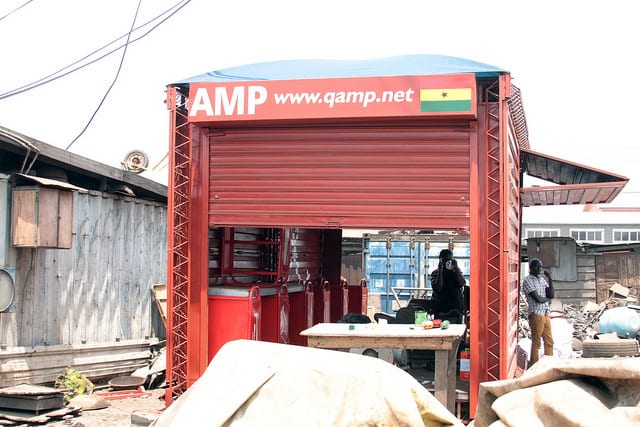

From Dumpsite to Manufactory:
While others saw Agbogbloshie as a toxic e-waste dump, the AMP team recognized its potential as an urban-scale open-air manufactory. The scrapyard, where an estimated 6-10,000 men and women work, became the starting point for AMP’s mission of collective action. By reclaiming materials and components from end-of-life equipment, the AMP team aims to prototype tools and develop a hybrid digital platform for recycling, making, sharing, and trading.
Building a Spacecraft:
One of the notable initiatives of AMP is the construction of a spacecraft at Agbogbloshie. The spacecraft is a mobile kiosk equipped with a coordinated set of tools and equipment that empower makers to create new products from their environment. This initiative not only promotes creativity but also provides local communities with access to affordable, upcycled products. Additionally, the AMP team is developing a Maker App, a dedicated open-source platform that connects maker and recycling communities, offering training and real-time information on scrap and trading.
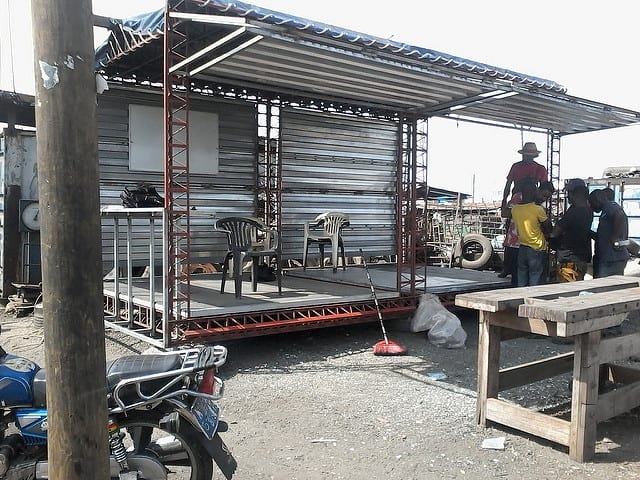
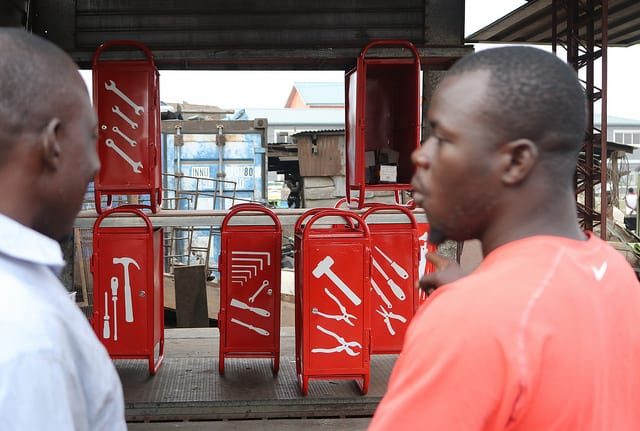
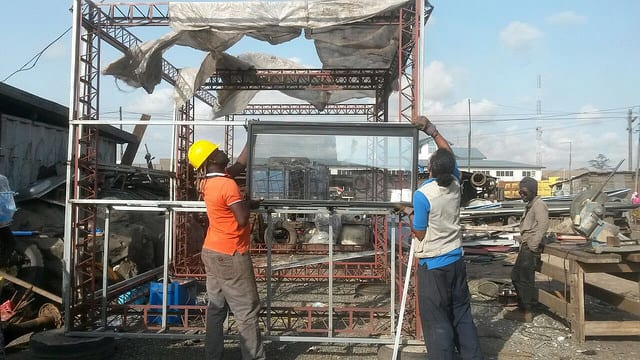



The Power of Collaboration:
At the core of the AMP project is collaboration. By embracing co-design and involving diverse stakeholders, including scrapyard workers, students, and professionals from local and international universities and institutions, AMP seeks to foster innovation across class, religious, and tribal groups. This approach ensures that the project builds on existing models and methods, leveraging what already works to create an innovative future for Africa.
Rewriting the Story of Waste:
AMP’s vision extends beyond recycling and waste management. By nurturing skills, supporting employment, and fostering entrepreneurship, AMP aims to rewrite the narrative surrounding waste and toxic materials. The project serves as a learning ground for makers and students to collaborate, fostering a growing hub for entrepreneurship and sustainable businesses. Through their efforts, AMP is turning Agbogbloshie into a place of abundance, regeneration, and sustainable livelihoods.

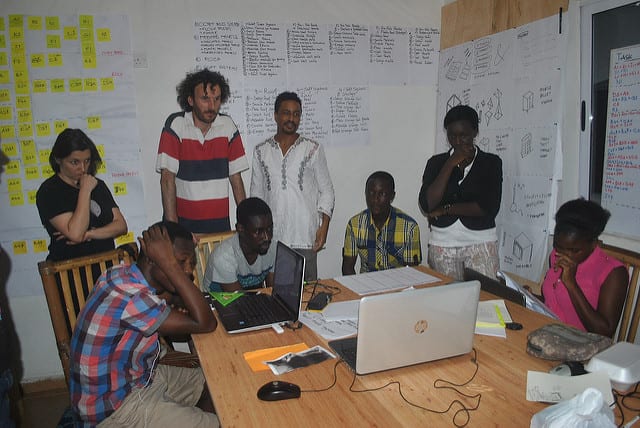
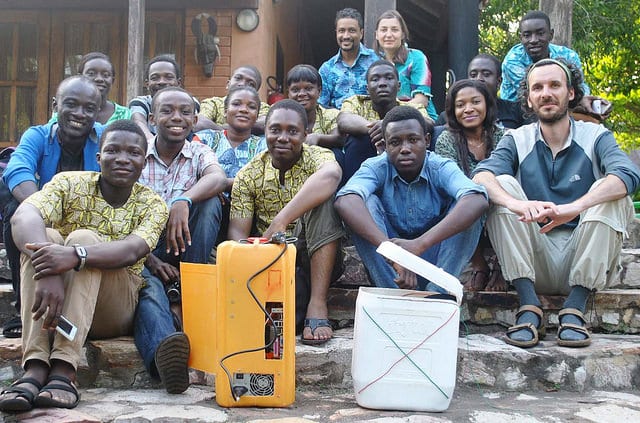

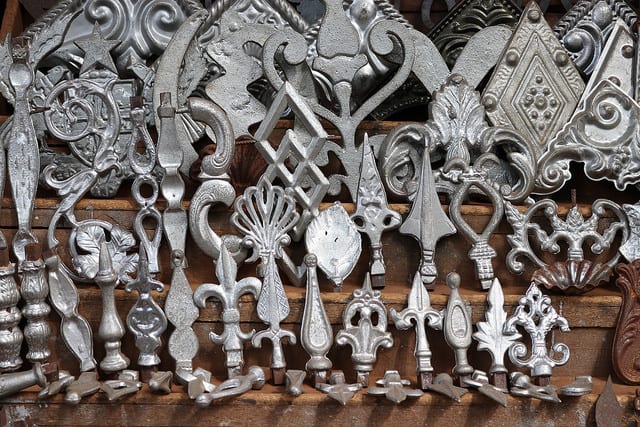

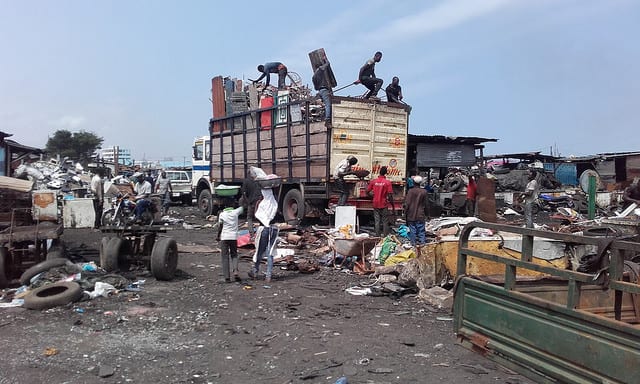

AMP’s Impact and Expansion:
Since its inception, the AMP project has made significant strides. The network of grassroots makers has grown to over 750 local makers, hosting an additional 750 students and young people from across Africa and the United States. Together, they have created prototypes of recycled plastic tiles, shared knowledge on working safely with lead batteries, and explored innovative solutions to e-waste processing. The success of AMP has prompted the launch of AMP Spacecraft, a set of tools that enables communities anywhere to create their own mobile workshop spaces.
Agbogbloshie Makerspace Platform (AMP) is redefining the possibilities hidden within waste. Through their innovative approach, the AMP team is transforming Agbogbloshie Scrapyard from a symbol of pollution and toxicity into a beacon of creativity, collaboration, and sustainable entrepreneurship. By empowering local makers and embracing a culture of shared technology, AMP is rewriting the story of waste, paving the way for an abundant and regenerative future in Africa.